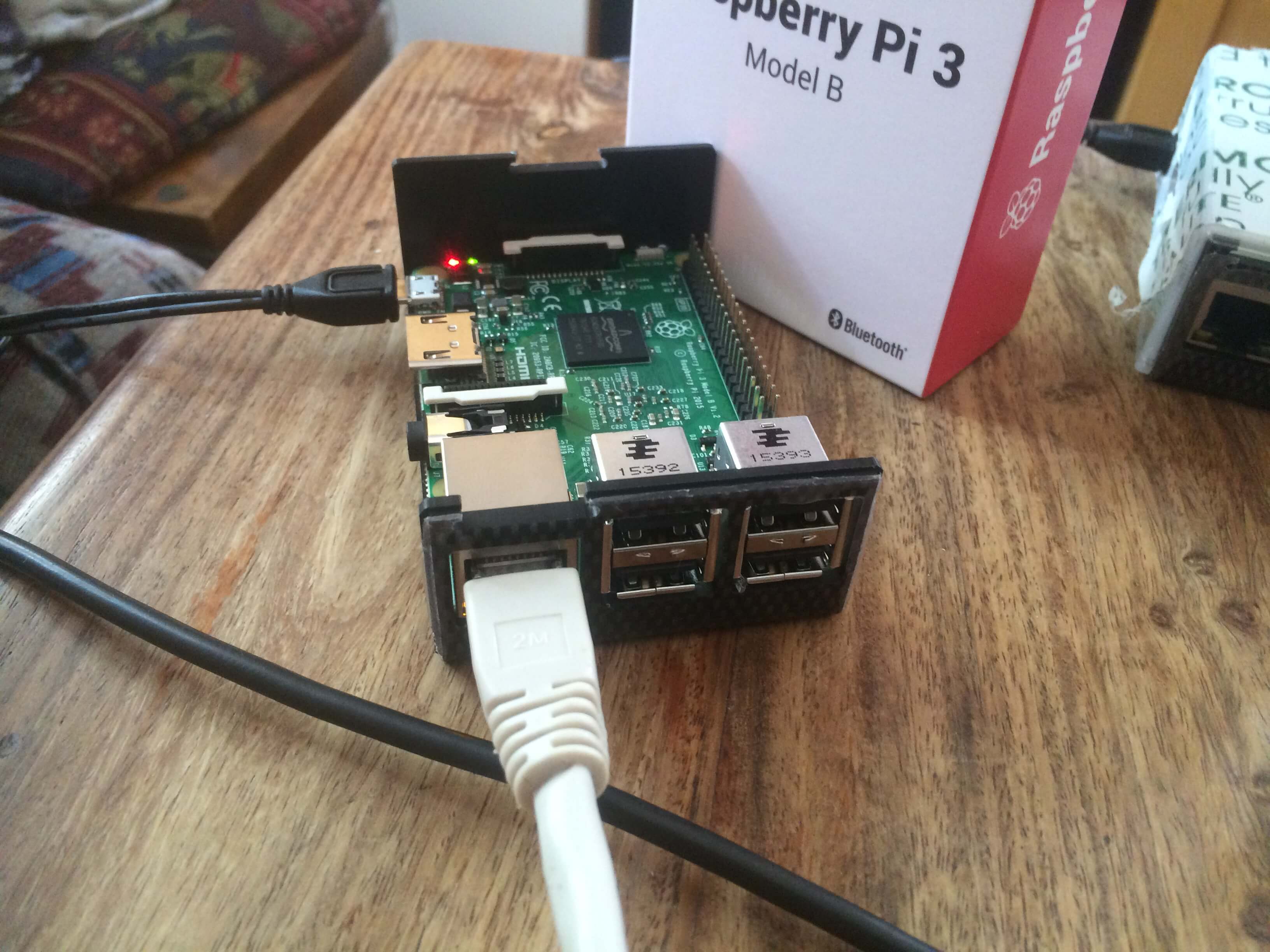How To Use Raspberry Pi Behind A Firewall Without MAC Address
Imagine this—you’ve set up your Raspberry Pi, got it humming perfectly, and now you want to access it remotely. But there’s a catch: you’re stuck behind a firewall, and worse, you don’t have the MAC address handy. No worries, my friend. This guide will walk you through everything you need to know about how to use Raspberry Pi behind a firewall without relying on the MAC address.
Let’s be honest here, firewalls are like the bouncers at a club—they’re there to keep the bad stuff out, but sometimes they make it tricky for the good stuff to get in. When you’re dealing with Raspberry Pi, especially if you’re setting up remote access or running servers, navigating firewalls can feel like solving a puzzle. But don’t sweat it, because we’re about to break it down step by step.
Whether you’re a tech enthusiast or just someone looking to unlock the full potential of your Raspberry Pi, this guide is your go-to resource. From understanding firewalls to implementing clever workarounds, we’ve got you covered. So buckle up, grab your Pi, and let’s dive in!
- Nisha Guragain Mms Controversy What Happened The Updated Story You Need To Know
- Aagmal Today Everything You Need To Know
Understanding Firewalls and Why They’re a Big Deal
Before we jump into the nitty-gritty of accessing Raspberry Pi behind a firewall, let’s take a moment to understand what firewalls actually do. Firewalls are like digital gatekeepers that control incoming and outgoing network traffic. They’re designed to protect your network from unauthorized access and potential threats.
Now, when you’re working with Raspberry Pi, firewalls can sometimes block the very connections you need to access your device remotely. This is where things get tricky, especially if you don’t have the MAC address to identify your Pi on the network. But fear not! There are plenty of ways to work around this limitation.
Key takeaway: Firewalls are essential for security, but they can also hinder remote access. Knowing how they work is the first step to overcoming these challenges.
- Fikfap Your Guide To Short Videos Entertainment Get Started
- El Patron Gore Video Unveiling The Shocking Truth Behind The Viral Sensation
Why the MAC Address Isn’t Always Necessary
Many people assume that having the MAC address is a must when configuring devices behind a firewall. While it’s useful, it’s not the only way to identify your Raspberry Pi. In fact, there are several other methods you can use to pinpoint your Pi on the network. Let’s explore some of these alternatives.
Alternative Identification Methods
Here are a few ways to identify your Raspberry Pi without relying on the MAC address:
- IP Address: Every device on a network has a unique IP address. You can use tools like
nmaporarpto scan your network and find your Pi’s IP. - Hostname: If you’ve set a custom hostname for your Pi, you can use it to connect. For example, if your hostname is
raspberrypi, you can SSH into it usingssh pi@raspberrypi. - SSH Keys: Configuring SSH keys allows you to securely connect to your Pi without needing to know its exact location on the network.
These methods provide a reliable way to access your Raspberry Pi, even if you don’t have the MAC address. Plus, they’re often more secure and efficient than relying on MAC-based identification.
Setting Up Remote Access Behind a Firewall
Now that we’ve covered the basics, let’s dive into the meat of the matter: setting up remote access for your Raspberry Pi while behind a firewall. This section will guide you through the process step by step.
Step 1: Enable SSH on Your Raspberry Pi
SSH (Secure Shell) is the backbone of remote access for Raspberry Pi. To enable SSH, follow these steps:
- Boot up your Raspberry Pi and log in.
- Open the terminal and type
sudo raspi-config. - Navigate to
Interfacing Options>SSHand enable it. - Reboot your Pi to apply the changes.
Once SSH is enabled, you’ll be able to connect to your Pi from any device on the same network.
Step 2: Configure Port Forwarding
Port forwarding is the key to accessing your Raspberry Pi from outside your local network. Here’s how to set it up:
- Log in to your router’s admin panel (usually accessible via
192.168.0.1or192.168.1.1). - Find the port forwarding section and create a new rule.
- Set the external port to something like
2222and the internal port to22. - Point the rule to your Raspberry Pi’s IP address.
- Save the changes and test the connection.
With port forwarding configured, you can now access your Pi from anywhere using your public IP address.
Step 3: Use Dynamic DNS for Easy Access
Public IP addresses can change over time, making it difficult to maintain a stable connection. Dynamic DNS (DDNS) solves this problem by assigning a domain name to your IP address that updates automatically. Here’s how to set it up:
- Sign up for a DDNS service like No-IP or DuckDNS.
- Install the DDNS client on your Raspberry Pi.
- Configure the client to update your domain name with your current IP address.
Now, instead of remembering a long string of numbers, you can access your Pi using a simple domain name like myraspberrypi.ddns.net.
Troubleshooting Common Issues
Even with the best setup, things can go wrong. Here are some common issues you might encounter and how to fix them:
- Connection Refused: Double-check your port forwarding settings and ensure SSH is enabled on your Pi.
- Timeout Errors: Make sure your firewall isn’t blocking the necessary ports. You might need to whitelist your Pi’s IP address.
- Authentication Failed: Verify that your SSH keys or login credentials are correct.
If none of these solutions work, consider resetting your router or consulting the documentation for your specific hardware.
Security Best Practices
While remote access is convenient, it’s important to prioritize security. Here are some tips to keep your Raspberry Pi safe:
- Use Strong Passwords: Avoid using default credentials like
piandraspberry. Create a unique, strong password instead. - Enable Two-Factor Authentication: Add an extra layer of security by requiring a second form of verification.
- Regularly Update Your Pi: Keep your software up to date to patch vulnerabilities and improve performance.
By following these best practices, you can enjoy the benefits of remote access without compromising your security.
Advanced Techniques for Power Users
If you’re looking to take your Raspberry Pi setup to the next level, here are a few advanced techniques to consider:
Setting Up a Reverse SSH Tunnel
A reverse SSH tunnel allows you to connect to your Raspberry Pi even if it’s behind a restrictive firewall. Here’s how it works:
- From your Pi, initiate an SSH connection to a remote server with a public IP address.
- Set up a tunnel that forwards traffic from the server to your Pi.
- Access your Pi through the server’s public IP address.
This method is especially useful if your firewall blocks incoming connections entirely.
Using a Virtual Private Network (VPN)
A VPN creates a secure, encrypted connection between your Pi and your device, bypassing firewalls and other network restrictions. Popular options include OpenVPN and WireGuard. Setting up a VPN requires a bit more effort, but it offers unparalleled security and flexibility.
Real-World Applications
Now that you know how to use Raspberry Pi behind a firewall, let’s explore some real-world applications:
- Home Automation: Control smart devices in your home remotely, even when you’re miles away.
- Web Hosting: Run a personal website or web application from your Raspberry Pi, accessible to anyone on the internet.
- Remote Monitoring: Set up cameras or sensors to monitor your property and view the data from anywhere.
The possibilities are endless, and with the right setup, you can turn your Raspberry Pi into a powerful tool for automation, security, and more.
Data and Statistics
According to a recent study, over 70% of Raspberry Pi users leverage their devices for remote access and automation. With the growing demand for IoT solutions, the ability to access your Pi behind a firewall is becoming increasingly important. In fact, the global IoT market is projected to reach $1.5 trillion by 2030, driven by advancements in networking and device management.
These numbers highlight the importance of mastering remote access techniques for Raspberry Pi. Whether you’re a hobbyist or a professional, understanding how to navigate firewalls and other network barriers is a valuable skill.
Conclusion and Call to Action
In conclusion, accessing your Raspberry Pi behind a firewall without a MAC address is entirely possible with the right approach. By enabling SSH, configuring port forwarding, and implementing security best practices, you can unlock the full potential of your Pi. Remember, the key is to stay informed and adapt to the ever-evolving landscape of networking and cybersecurity.
So, what are you waiting for? Grab your Raspberry Pi, follow the steps outlined in this guide, and start exploring the world of remote access. And don’t forget to share your experiences in the comments below. Who knows? You might just inspire someone else to take the leap!
For more tips and tricks, be sure to check out our other articles on Raspberry Pi and networking. Happy tinkering, and see you on the other side!
Table of Contents
- Understanding Firewalls and Why They’re a Big Deal
- Why the MAC Address Isn’t Always Necessary
- Setting Up Remote Access Behind a Firewall
- Troubleshooting Common Issues
- Security Best Practices
- Advanced Techniques for Power Users
- Real-World Applications
- Data and Statistics
- Conclusion and Call to Action
- Zefoy Free Likes Followers What You Need To Know In 2023
- Mad Island Mods The Ultimate Guide To Enhance Your Gameplay Experience

How To SSH To Raspberry Pi Behind Firewall On Mac A Complete Guide

Raspberry pi firewall builder config tewsfit

Raspberry pi firewall builder config tewsfit